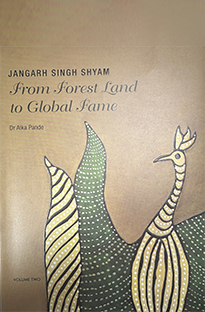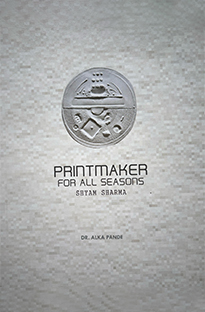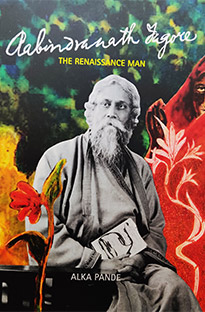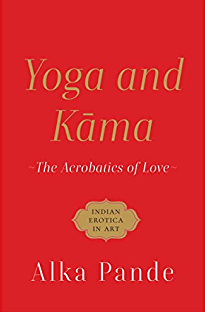
Publications Books & Journals
Devi and her Avatars – 2025
Publisher: Rupa Publications
In Devi and Her Avatars, writer and historian Dr Alka Pande has chosen some of the most revered and fascinating avatars from the Devi Bhagavata Purana and the Durga Saptashati-the two key texts in which the many forms of Devi are celebrated-and explored their origins as well as the local lores, legends and symbolism surrounding them.
From Adi Shakti to Shiva Shakti to Mahadevi, from the Vedic to the Puranic to the tribal goddesses, from Vindhyavasini to Durga to the kuladevis, the Goddess is worshipped in different forms. In Assam, She is Kamakhya Devi, the Tantrik goddess; in Bengal, She is Durga and Kali, slayers of asuras and demons; in Gujarat, She is Momai Mata or Dashama; in Kerala, Her form is Bhadrakali; in Tamil Nadu, She is Amman; among the Gonds in central India, She is worshipped as Prakriti and Kankali Kali.
She is the Eternal and reigns supreme as the Primal Energy. This fascinating book traces how Devi’s presence has been experienced and revered by Her believers for many millennia.
Jangarh Singh Shyam – From Forest Land to Global Fame – Volume II, 2024
Publisher: Ajay Kumar Gupta , Fabuleux Art Heritage Pvt. Ltd.
The work of jangarh singh shyam was marked by the radiant tapestry of multi-coloured dots that wove dreams and delineated territories. He was the first artist from the gond tribe who was recognised by his simple juxtaposition of dots and dashes and the dynamic world of myths creatures and scenes from their tribal culture.
Ramayana: Through 15 Iconic Characters – 2023
Publisher: Perky Parrot, Niyogi Books
The Ramayana, one of India’s great epics, continues to have a huge impact on Indian life. Originally written in almost 24,000 stanzas by Valmiki, social and public goals from this epic are manifested into our lives.
In this contemporary rendition meant for young adult readers, the author, art historian Dr Alka Pande, describes her take on 15 characters, who present the kaleidoscope of what it is to be human-from demonic, mean and negative, to suprahuman and divine. These 15 characters from the epic present a wide canvas of human behaviour and offer insights into ethical questions that affect us all.
To show glimpses into just a few – the characters of Rama, Bharata and Lakshmana provide a model of supportive brotherhood and friendship; Hanuman remains as an optimal remarkable Karma Yogi; Sita is viewed as the best illustration of womanly loyalty and constancy. With an introduction that sets the stage for the chosen personae, Ramayana Through 15 Iconic Characters offers fresh perspectives into this age-old, yet evergreen, Indian epic.
Rabindranath Tagore : The Renaissance Man – 2022
Discover the lives of ground-breaking Indian artists, from their childhoods, full of dreams, realised through passion, perseverance and personality.
Inspired by the life of Rabindranath Tagore, born in 1861, in the heart of Calcutta, this book tells the story of his journey as a poet, dramatist, musician, scholar, author and painter. His work is eternal and lives on in the hearts and minds of people, especially his composition of India’s national anthem, Jana Gana Mana.
The Adulterer and Kama: The Seduction of Illicit Love – 2022
Publisher: Speaking Tiger Books
‘Until recent centuries—when Indian society turned prudish and hypocritical—the sexual sensibilities of society were derived from the kamashastras, which give sexuality pride of place in human experience… And in the kamashastras, it appears that adultery is considered almost a prerequisite for good, uninhibited sex that satisfies both partners.’
This delightfully mischievous book brings us a selection of images from pre-modern India of men and women engaged in sex that is most probably adulterous: married men and women—and courtesans—having quick or leisurely secret liaisons.
The Nayika and Kama: She Takes Her Pleasure – 2022
Publisher: Speaking Tiger Books
‘The Nayika in her different moods animates ancient and medieval art, poetry and drama… Her desire for physical union with the lover is as strong as her anguish due to separation from him. Her passion is both generous and intense; she knows how to give pleasure, and she knows how to take it.’
This lovely book presents a selection of images that show the Nayika—the ideal romantic heroine of classical Indian literature—in varied states of sexual pleasure. There are images from the Khajuraho and Hampi temple complexes, from illustrated Kamasutra manuscripts with miniature paintings from the Punjab hills, Rajasthan and the Deccan, and from popular erotic pamphlets of the 19th century.
Yoga and Kama : The Acrobatics of Love – 2022
Publisher: Speaking Tiger Books
Yoga is the science of ultimate balance—between dharma (duty, or “right living”), artha (economic well-being), kama (erotic desire) and moksha (enlightenment or liberation)… Sexual satisfaction is thus essential for a full and healthy experience of life. The most visible manifestations of yoga are physical poses or asanas and these were the easiest to depict. Hence the profusion in India’s pre-modern sculpture and art of people engaged in a variety of sexual acts, the positions inspired directly by yoga asanas.’
A leading authority on India’s art and erotic traditions brings us images of lovers in yogic or yoga-inspired poses—for mindful pleasure, extended bliss, or passionate excess—and ranging from the stunningly gymnastic to the delightfully over-the-top. With a brilliant introduction explaining the connection between yoga and kama, this book of art is as exquisite as it is unusual.






